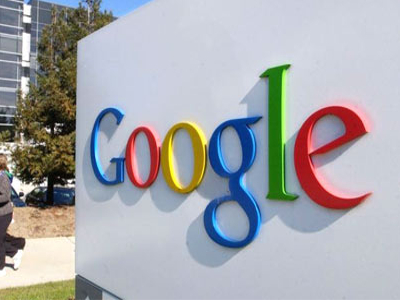Android TV Interface Leaks After Amazon's Fire TV Launch
Give us a break: this can't be a coincidence.
It should come as no surprise that just days after Amazon released its Fire TV set-top-box to the public, documents describing Android TV – along with screenshots of the interface – begin to surface to wow potential customers. Some leaks are genuine leaks, but the timing of this one says otherwise.
In this installment, the documents fell into the hands of The Verge. According to the documents, Google is about to unleash a new assault onto the living room, and it won't be anything like Google TV, which failed to connect with consumers. "Android TV is an entertainment interface, not a computing platform," writes Google. "It’s all about finding and enjoying content with the least amount of friction. [It will be] cinematic, fun, fluid, and fast."
Android TV's interface will be simple, and Google is calling on developers to convert their own and/or build new simple apps. The report also states that this simple interface will consist of a set of scrolling "cards" to represent movies, shows, apps and games sitting on a "shelf".
To navigate through these cards and shelves, the customer uses the remote control to scroll left and right for different suggestions, and up and down to scroll through different categories. The remote will also include Enter, Home, and Back buttons. However Google mentions optional game controllers, meaning these can be used to navigate the interface as well (like consoles).
Not to be outdone by Fire TV, Google's solution will also support voice input and notifications although the docs show that Google wants developers to rely less on the notifications. Even more, the company wants access to content to be "simple and magical", meaning that Google wants the customer to make only three clicks or gestures when searching for content.
"Android TV is Android, optimized for the living room consumption experience on a TV screen," writes the company. The report indicates that Google is ripping out unneeded features in Android TV such as touchscreen support, telephony, cameras, and near-field communication to keep the developers focused on the available hardware. What that is right now is unknown.
Up until now, developers have targeted smartphones and tablets as the core audience. For Chromecast, all they had to do was, according to Google, insert a few lines of code in order for their apps to be compatible. However for Android TV, developers will need to target large screens using a new interface that will match Android TV's layout. All developers are said to be keeping the same graphical presentation across the board.
Get Tom's Hardware's best news and in-depth reviews, straight to your inbox.
So what will happen with Chromecast now? As we previously speculated, it's not going anywhere. Instead, it will likely serve as a cheap alternative to Android TV, which could very well cost $99 to compete with Amazon's Fire TV. That of course will depend on the hardware: Google may possibly use Nvidia's Tegra 4 or Tegra K1 to please the Android gamers.

Kevin Parrish has over a decade of experience as a writer, editor, and product tester. His work focused on computer hardware, networking equipment, smartphones, tablets, gaming consoles, and other internet-connected devices. His work has appeared in Tom's Hardware, Tom's Guide, Maximum PC, Digital Trends, Android Authority, How-To Geek, Lifewire, and others.
-
somebodyspecial Put it off as long as needed to get K1 in there. The quicker we get Kepler+ (or any desktop based gpu) into mobile the better. More games will be made in OpenGL to address mobile & PC (and console if they live past this year or next as Socs hit 20nm etc) and that saves devs time/money. The months shaved off the port jobs gives extra profits or extra time for working on the game itself instead of the port process.Reply
2yrs until DX12 (well, 1.75), I hope OpenGL is dominant by then. Once people are use to it DX12 will be a tough sell. You would stay OPEN rather than go back to Dx12/microsoft if you'd been using it for the last 2yrs. DX12 would have to have something you want that OpenGL 4.4 (probably a 5.0 etc by xmas 2015) etc can't do. MS would just have to write an OpenGL driver for the xbox1...LOL. We know the hardware can do it. -
antilycus Ha Mircrosoft would rather dive balls first into a vat of acid then do anything to help the market if the market is competition. OpenGL and the Kronos group need to keep up with technology. Right now the developers are the slow ones, not the API's. Tescellation really hasn't even had it's day yet. However, if Android TV is what Android OS is, then we can expect crap (java) on top of Linux. If it gives developers access the Linux kernel, there might be hope to this.Reply -
dalethepcman If they really want this to be successful they need to give a TV experience plus, instead of just the plus. Your cable box doesn't "boot" to the TV Guide, it turns on to a channel so users can immediately watch TV if they chose to. They need to find someway to overlay on top of traditional programming via HDMI pass through, or store "favorite" content locally to begin playing as soon as the device detects its input is active.Reply
